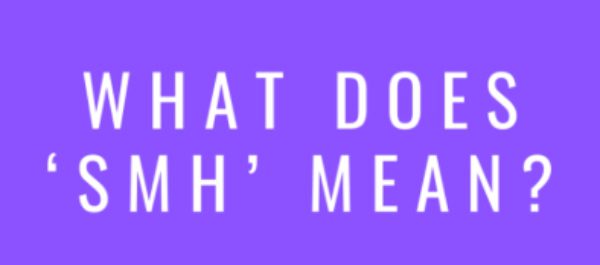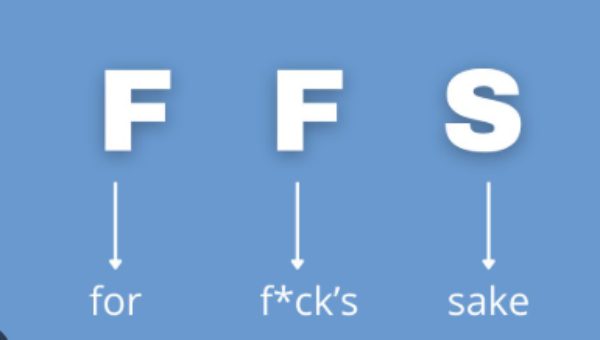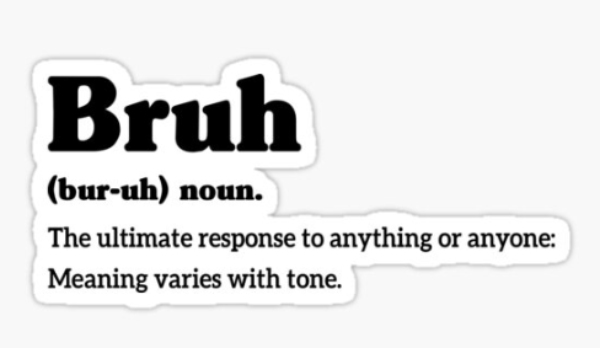Internet slang is everywhere. The digital language moves fast, and SMH stands out as one of the most frequently observed internet acronyms. “SMH,” or “shaking my head.” People use this abbreviation to convey their skepticism or exasperation, as it adds an extra impact beyond spoken words. Figure out the correct meaning of the slang SMH to prevent misunderstandings in your online communications.
Now, people move between texting, social media, and memes, so it becomes essential to learn these abbreviated expressions to stay relevant. The following piece will explain how to use SMH in proper situations and what exactly this acronym stands for. Let’s dive in!
What does SMH mean in texting?



According to the definition in the Cambridge English Dictionary, the abbreviation SMH stands for ‘shaking my head’. The brief and direct expression quickly shares exasperation, disbelief, or dissatisfaction about matters that cannot be fully communicated with words.
The correct meaning of the slang term “SMH” delivers strong reactions that require no additional clarification for their impact. The following list of situations on how it is used should further clarify the meaning:
- Disbelief: For any unreasonable statement, you can use “SHM” to express your utter disbelief.
- Disapproval: Someone does something dumb? Throw an SMH their way..
- Frustration: You use it to show that you’re not in the mood to explain further.
- Disappointment: A simple SMH gesture expresses everything someone needs to convey their disappointment about letdowns from others.
People normally utilize that term to extend beyond its basic lexical meaning. And the beauty of SMH meaning? The expression conveys itself quickly and efficiently without unnecessary words, especially when you come across something both offensive and nerve-wracking.
A headshake that speaks even louder than words in texting!
Where did SMH come from?
The origins of SMH predate the emergence of internet jargon, a time when digital language was still unknown. The original meaning of SMH referred to the Sydney Morning Herald, which served as a preferred news outlet for Australians; however, its contemporary version differs from the newspaper we are discussing.
Internet users adopted this shorthand where emotional feedback could be transmitted first via chat rooms and text phones and later via Facebook and Twitter. People widely use SMH as part of their everyday casual online communications to share disbelief while responding to the actions or words of others.
People frequently use the abbreviation, especially in memes, to introduce comedic elements into their feelings of anger quickly. Digital culture produces new meanings while transforming established ones, making SMH a prime example. The modern-day Sydney Morning Herald newspaper continues to exist, but SMH’s current meaning has shifted toward expressing frustration and annoyance.
The rise of smh in communication
The expression “SMH” experienced explosive popularity among younger individuals on social media because it unites brevity with attitude in a way. The online platforms Twitter, Instagram and TikTok have created SMH into an essential tool for sharing strong disbelief reactions that manage to sound both laid-back and intense.
Why is it so popular? It’s simple and relatable. Young individuals between the ages of 13 and 24 often use SMH to respond to various situations, including shocking news stories and embarrassing online incidents. The shortness of the expression makes it seamlessly adaptable to modern digital communication speeds.
The SMH acronym represents an entire emotional state that goes beyond simple words. The increasing use of celebrities and influencers on social media has led to the popularity of shorter and quicker slang forms, while humor and sarcasm have become effective ways to navigate online connections.
Contexts when ‘SMH’ is used
The abbreviation SMH serves as an ideal method to express disappointment through unintentional facepalm reactions that often exceed verbal communication. Several common situations in which people use SMH in texts.



- Ridiculous or disappointing situations: Observing somebody fail in an embarrassing manner, which makes you react with an expression of shock and disappointment. That’s when SMH swoops in – “She lost her keys again?”
- Reacting to stupidity: People who want to express their disapproval of stupidity typically use SMH in such situations. Such as, “SMH. This can be for an individual to maintain a genuine belief that Earth functions as a flat shape.”
- Absurdity: Any situation that becomes absurd and unexplainable when life becomes impossible to understand. For instance, “They delayed the plane again? – SMH.”
- Frustration or exasperation: Been there, right? The expression SMH conveys a message of complete frustration through its action. An example: “The WiFi problem remains unresolved despite numerous requests. SMH, we’ve been over this.”
- Annoying behavior: Any repeated bothersome conduct warrants the use of SMH to the rescue. For example: “Your unclean plates always remain on the table, making you seem careless. smh”
The initialism SMH functions as more than an acronym because it allows people to express their emotions. The expression functions as the ideal solution to convey internal anger faced during absurd, frustrating, or ridiculous moments. SMH delivers direct complaints since it covers both foolish decisions and general frustration.
What does smh mean sexually?
The majority of SMH means show frustration alongside disbelief or announce disappointment between people, but certain users employ this acronym as a joke. “SMH” functions as a humorous show of disbelief towards wild or uninhibited actions. When someone makes inappropriate or forward statements, you would express a playful reaction by responding with an “SMH” reaction.
The expression exists without any sexual undertones and serves a variety of non-sexual purposes within normal conversations. Just remember, context is everything! Maintain a light-hearted tone when using this expression unless you want to cross boundaries of enjoyment.
How to use ‘SMH’ in text and social media correctly?
Simple though “SMH” may seem, the real challenge lies in precise timing for adding its impact. Let’s break it down:
- Casual text messaging:
The SMH abbreviation works well in everyday texts, especially when expressing reactions to humorous or annoying situations. The abbreviation provides a quick delivery of your feelings through brevity, rather than lengthy written explanations.
- Social media (like TikTok and Snapchat) posts, comments:
Common use of SMH is for responding to bizarre content on social media. This expression enables you to express outrage through simple wording instead of lengthy explanations.
- With emojis for emphasis:
Adding emojis boosts the reaction. Different emojis expressing facepalm, rolling eyes, and laughter deliver the message of total absurdity without lengthy explanations.
- Capitalization & variations:
smh: Lowercase smh makes the phrase feel relaxed but slightly indifferent.
SMH: When text appears in all capital letters, it demonstrates an intensified emotional reaction. The expression serves best when something unbelievable occurs.
In texting interactions or when sharing memes, using “SMH” can reduce communication time while conveying the emotion you feel without the need for lengthy explanations.
Variations and similar terms
- SMFH: People usually use this when they feel exasperated with an unbelievably frustrating situation. Example: You’re still making the same mistake? SMFH.



- 🤦♀️Facepalm: The visual equivalent of SMH. Physical slapping of your face represents your state of extreme disbelief and frustration. The emoji version of this expression exists while memes also feature it often. Example: He just tripped over nothing… facepalm.
- FFS: “For F***’s Sake.” People usually use this powerful exclamation when they reach a state of absolute frustration. Example: Why won’t this thing work? FFS!



- Bruh: The usage of bruh represents a neutral response following inexplicable, ridiculous behavior that brings no emotional reaction. Example: You forgot the tickets? Bruh.



How to talk with your kid about slang use
Teaching slang to children proves to be a complex task. Maintaining focus in the discussion remains important even though you want to avoid demonstrating outdated knowledge. These steps will assist you when starting such conversations:



🔔 Start the conversation early
Initiate conversations about slang as your child begins to share unclear text abbreviations. Once slang enters common talk, bring it up naturally when you speak with your child. Introduce a slang term that sticks out, such as “SMH” to request their meaning. This keeps the dialogue open.
🔔 Stay curious
Instead of only stating what is inappropriate, request an explanation about the slang terms. You should learn how and why your child engages in texting. You frequently say “SMH,” yet I do not understand why. By adopting this approach, you can understand their online activities without appearing judgmental.
🔔 Set boundaries
Every person needs to understand how to determine suitable times to use slang terminology as well as inappropriate moments for it. All uses of slang should remain limited to personal exchanges instead of formal schoolwork and professional presentations.
🔔 Use technology to your advantage
Social media tracker apps, such as FlashGet Kids, enable parents to monitor and set restrictions on their children’s online interactions. Key features include screen time limits, live screen mirroring, app tracker and keyword detection, etc. This affordable tool supports the stealth mode. This way, parents can regulate their child’s digital life more effectively without being overly protective.
🔔 Keep the dialogue open
Make it a habit for your child to approach you anytime they encounter anything new or do not understand it. Having an open platform for queries gives your child the chance to maintain responsible slang use.
Regular discussions about digital slang activities will help your child practice slang use safely and properly when you maintain an interest in their digital interactions.
Final thoughts
In the fast-paced world of texting and social media, abbreviations like SMH have become essential tools for expressing emotions quickly and effectively. Now you understand the meaning of “SMH”, for “shaking my head”, and how to use it in the right contexts, you’ll be able to add a bit of personality to your online conversations. When using slang, one must pay close attention to the context to create proper understanding.
People should maintain a relaxed tone while staying true to their intent and ensuring the reader’s understanding. Using slang can enhance digital communication, while the correct application of slang ensures you maintain both effective and respectful communication.

